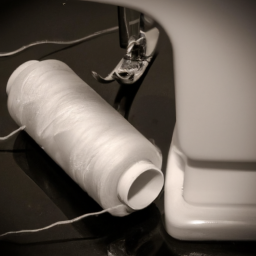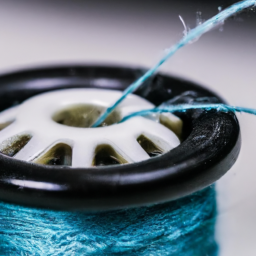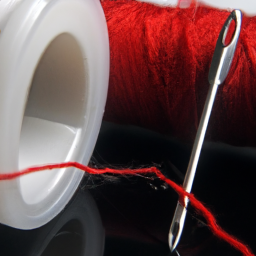

The invention of the sewing machine in the early 19th century revolutionized the textile industry, transformed the way people manufactured clothing, and had a profound impact on society as a whole. Let’s delve into who exactly benefited from this remarkable innovation.
1. Seamstresses and Tailors
The sewing machine had an enormous effect on seamstresses and tailors. Prior to its invention, these skilled workers had to sew garments by hand, which was a time-consuming and labor-intensive process. The arrival of the sewing machine significantly increased productivity and allowed them to complete their work at a much faster pace. This not only improved their craftsmanship but also increased their earning potential as they could take on more orders.
2. Clothing Manufacturers
Large-scale clothing manufacturers were among the primary beneficiaries of the sewing machine. With this mechanical marvel, they could produce garments on a mass scale, reducing costs and significantly increasing production output. It enabled the rise of ready-to-wear clothing, which could be manufactured quickly and more affordably. This revolutionized the fashion industry, making stylish and well-fitted clothing accessible to a wider range of people.
“The sewing machine created a clothing revolution, democratizing fashion and changing the lives of many.” – Fashion Historian
3. Consumers
Consumers were undoubtedly major beneficiaries of the sewing machine. It allowed clothing to be produced more rapidly, leading to a decrease in prices. It made fashionable clothing affordable and accessible to the general population. People could purchase ready-made clothing or have custom garments made at a fraction of the cost compared to the pre-sewing machine era. The increase in availability and variety of clothing choices greatly influenced fashion trends and improved people’s overall quality of life.
4. Empowerment of Women
The sewing machine played an instrumental role in empowering women. By shortening the time it took to sew, women had more time available to engage in other activities such as education, pursuing careers, or participating in social movements. Sewing machines provided opportunities for women to become self-employed and establish their own businesses, promoting financial independence and greater gender equality.

In conclusion, the sewing machine had a transformative impact on various segments of society. From seamstresses and tailors to clothing manufacturers and consumers, the benefits were far-reaching. Additionally, it contributed to the empowerment of women, opening doors for their economic and social advancement. The sewing machine stands as a testament to human ingenuity, forever changing the way we create and experience clothing.





Sewing machines have changed the world, enabled increased productivity and convenience.
Sarah Lambert: Totally agreed! Sewing machines have taken the tedious labor out of clothing manufacturing.
Adriana Tate: Absolutely – sewing machines made it easier for individuals to quickly produce clothing for sale or personal items.
Kayla Cole: I agree with the others! They also fostered the rise of ready-made clothing, which meant that people didn’t need to spend as much time sewing.
It is clear to see that the advent of the sewing machine was a game-changer for the fashion and clothing industries. It enabled people to quickly and efficiently create garments, and to produce items on a larger scale than ever before. This revolutionized retail and lead to increased access to fashion for people all over the world.
Sewing machines helped propel the clothing and fashion industry forward, revolutionizing the way people purchased clothing, both in terms of production speed, accessibility and cost.
Absolutely! The sewing machine made it possible for people to create garments and accessories quickly and efficiently, allowing them to expand businesses and launch new designs and trends faster than ever. The impact of the sewing machine is truly remarkable.